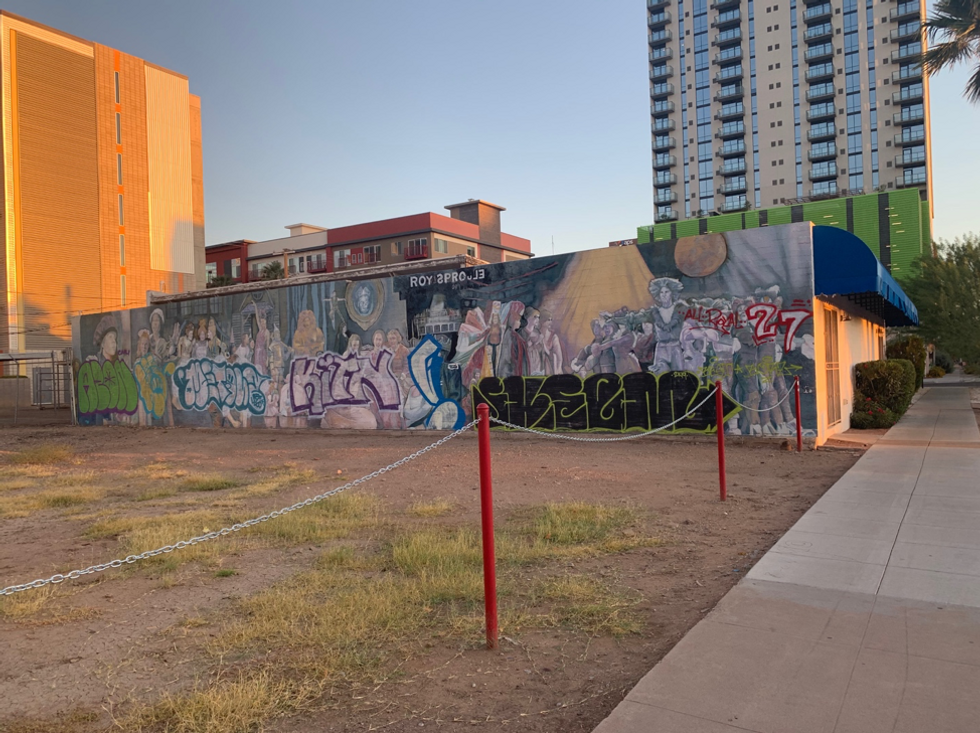Street artists want their work to be protected under the Visual Arts Right Act.
Since the emergence of anonymous street artists like Banksy and Mr. Brainwash, the art world has experienced a shift in opinion.
The act of spray painting on the side of buildings has been long considered a crime, but in recent years what is now called street art has become a cultural movement.
In the last few years, blank walls have become a space for political protests and self-expression; however, street art still remains very controversial.
There is something that separates street art from vandalism, and it's entirely up to the artist.
In an Artrepreneur magazine article, published in 2017, street art can be distinguished by its attention to detail and the tendency to make a social or political commentary in a mural form, while graffiti is identifiable as a quick scribble.
Banksy, an anonymous British artist, rose to international fame from his free hand and stencil work that challenges authority.
According to a report from Britannica, Banksy had described himself as a "quality vandal" and has successfully used graffiti to capture the attention of thousands.
It has not yet been clearly determined by courts whether street art is legal or protected under the Visual Arts Right Act, which is a ruling set in place to protect artist's work from being altered or tampered with.
Graffiti almost always is considered vandalism and is punishable by up to one year in local jail or fines.
Vandalism is defined by Webster's New World College Dictionary as "action involving deliberate destruction of or damage to public or private property"
This offense is much more common than one might think.
Joan Fiesta, a retired police lieutenant with a major university, said that the most common offenders were students or people affiliated with the university.
Fiesta also said that most reports were of hate-related crimes, like racial slurs or swastikas, on bathroom walls.
The writing did not usually include gang-related vocabulary, she said.
Jacob Holter, a now 20-year-old student, admitted to once writing on a bathroom wall in his high school.
"I think I was like 15 at the time, I thought it was funny," Holter said.
A trend among students is to share jokes, people often mention internet memes on bathroom walls now as a way to impress peers.
Holter said that he didn't realize at the time that these actions were against the law.
Hate speech or targeted words in vandalism is recognized by schools and students face consequences determined either by the school or it is brought to law enforcement.
Graffiti can be of more violation to the law, however, when the paint obstructs signage.
Fiesta said that those who were charged with vandalism were not any more likely to have committed more serious crimes than those who did not participate in the act.
Street art is sometimes used in communities to add more spirit to the area or portray the culture of the area; however, places where beautiful murals are depicted often are tagged, which obstructs the original artwork.
Street artists are often paid for their work, which takes them days, or weeks, to produce; graffiti is an art style that is very quick and uses spray paint cans to prevent a lot of cleanups.
"I don't like it when graffiti is used to tag a building, a railroad car, public transit basically anywhere where it's someone's property and the person doing the art does not have permission to add graffiti," said Debra Goley, a muralist from Goodyear, Arizona.
Goley also expressed her dislike for aerosol spray paint cans and would rather people hand paint their work for the sake of the environment.
Recent history shows how selective the Visual Arts Right Act is when it comes to protecting art from being tampered with.
According to an Arsty magazine article, a federal court ruled that VARA is not applicable to site-specific art.
Site-specific art refers to art that is made to fit a certain location.
Muralists are hoping that there will soon be changes made to the Visual Arts Right Act so that more cases may be protected by law.















